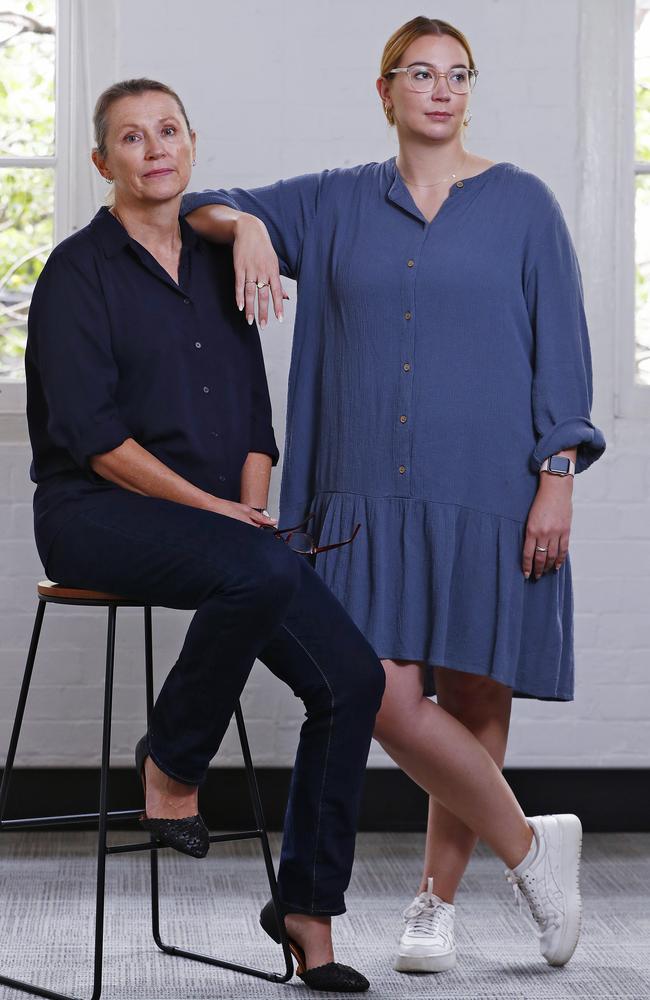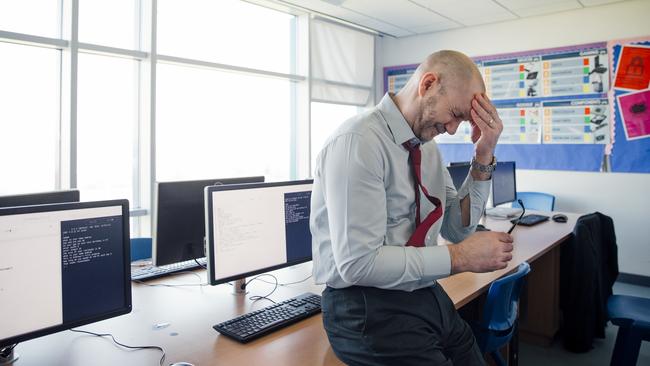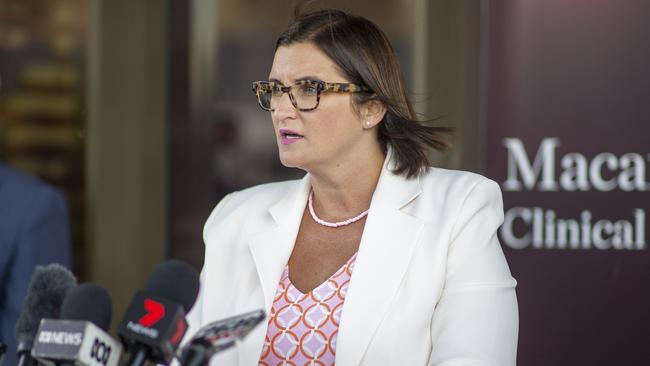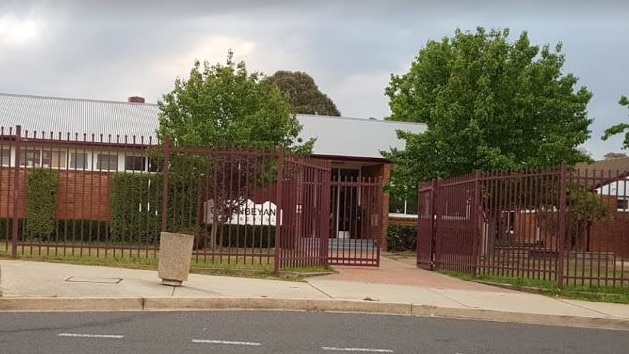NSW schools: Stress and burnout pushes thousands of teachers to think about quitting
More than half of NSW’s teachers are working more than 60 hours a week and it is pushing thousands of educators to the brink - both professionally and personally.
Education
Don't miss out on the headlines from Education. Followed categories will be added to My News.
Thousands of teachers are preparing to walk away from the job because of the crazy workload and poor pay — and that was even before the challenges of Covid.
An independent survey compiled by Australian Teacher Workforce Data has revealed one third of full-time NSW teachers plan to quit before retirement, while another third are considering leaving.
The survey also found more than half of the state’s full-time teachers were working more than 60 hours per week, including an average of 35.4 hours on non-face-to-face teaching tasks such as marking and lesson preparation.

The national data was compiled in 2018 by the Australian Institute for Teaching and School Leadership, which is funded by both federal and state governments.
The data has only now been released in full. This means the one in six who said they planned to leave “within five years” back in 2018 could be gone by next year.
The figures revealed NSW teachers were more likely to be working excessive hours than those in other states, and also more likely to retire from the profession early.
Kogarah High School principal and NSW Teachers Federation executive member Julie Ross said increased demands were making it harder to find and retain teachers.
“We’ve had situations where we’ve had to advertise a number of times for a couple of positions and we may only get one application,” Ms Ross said.

“I’m also having conversations with people who have been in the job for life who are now looking at other opportunities because it’s not sustainable.
“Since the pandemic this has only escalated with teachers saying: ‘I can’t do this any more’.”
Her daughter Ruby Blake only began full-time teaching in 2022, but said the pressure was already taking a toll.
“There are discussions about burnout and I’ve had conversations with other teachers about emotional breakdowns, where the stress is affecting the rest of their lives,” Ms Blake said.
NSW Teachers Federation president Angelo Gavrielatos claimed 2383 teaching jobs remained unfilled across the state as of February.
“We have a teacher shortage, we have a crisis, and the underlying cause of that crisis is non-competitive salaries and crippling workloads,” Mr Gavrielatos said.

But Education Minister Sarah Mitchell said the true figure was about half that, with many of the vacant positions newly created roles.
“I reject the assumption that there is a crisis in teacher supply, or that teachers are leaving the profession in droves,” Ms Mitchell said.
“Our teachers stay for an average of 12 years, which is higher than anyone else in the public service, except police.
“We need 3800 more teachers to meet demand to 2027. More than 3400 have already been recruited … and another 3700 are on the way through the teacher supply strategy.”
COVID WREAKING HAVOC IN SCHOOLS
Four public schools have had to return to online learning already, despite hundreds of retired and future teachers signing up to help out.
In January, the state government unveiled its radical plan to keep schools open by fast-tracking accreditation for retired teachers and principals, administration staff and final-year university students to act as cover for Covid-affected teachers.

Exclusive figures have revealed as of this week, 350 Department of Education corporate staff had been deployed to schools, while 1799 final-year university students had been granted interim teaching approval.
Throughout January and February, 297 retired teachers returned to classrooms as casuals, and a further 54 worked on a short-term basis.
Queanbeyan High School was the latest school to resume remote learning, when Year 7-10 students were this week told they could only attend campus three days per week.
Education Minister Sarah Mitchell said the principal made the call amid a local Covid-19 outbreak.
“Undoubtedly the best place for students to learn is at school, but we need some flexibility where there is a local outbreak of Covid,” Ms Mitchell said.
“If NSW Health advises we need to change the settings we will do that. We are constantly looking at the data together to make sure we have the right Covid-19 settings in place for our schools.
Opposition education spokeswoman Prue Car said the Covid stopgap did little to address a longer-term shortage of staff.
“It is a drop in the ocean in terms of the solution needed,” Ms Car said.
“What is actually needed is a plan to recruit more people for the longer term and keep them.”
NSW Teachers Federation president Angelo Gavrielatos labelled the workforce plan “gimmickry” designed to hide a chronic lack of teachers across the state.
Got a news tip? Email weekendtele@news.com.au


